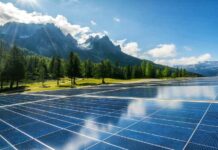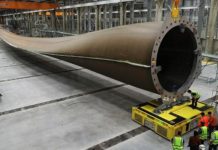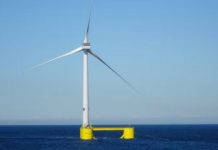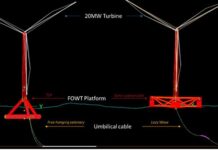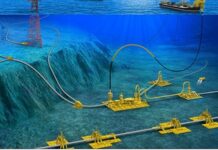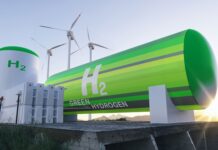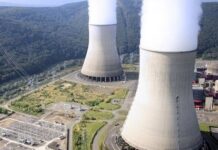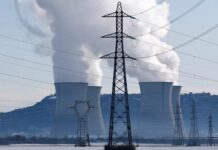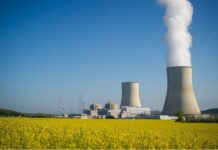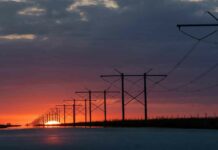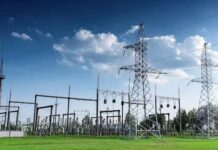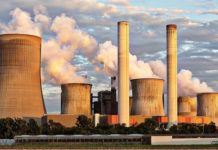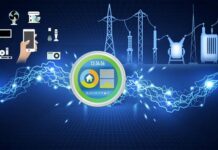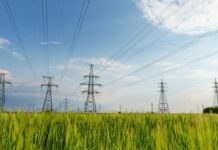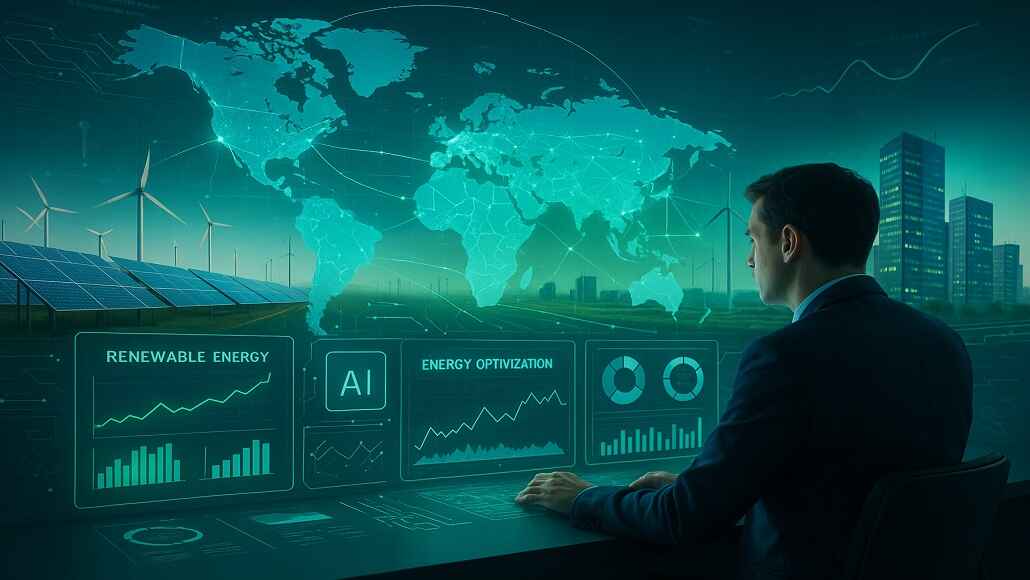As the need for energy around the world grows and the need to fight climate change becomes more urgent, there has never been a greater need for new ways to optimise energy use. Putting artificial intelligence (AI) into energy systems is one of the most exciting new developments. AI energy optimization is changing how energy is used, distributed, and managed, making it possible to be more efficient and sustainable in the long run than ever before.
AI is helping businesses, cities, and people use energy more efficiently and lessen their impact on the environment by using machine learning, predictive analytics, and real-time data analysis. AI is changing one of the most important parts of the global economy: energy optimisation. It can change everything from smart grids to green energy forecasting.
The Imperative for Energy Optimization
As economies grow, more people move to cities, and the world’s population grows, so does the amount of energy that is used. The International Energy Agency (IEA) says that by 2040, the world’s energy needs will have grown by 25%. At the same time, there is more and more pressure on the energy industry to “decarbonise.” Using renewable energy sources like solar and wind is becoming an important part of lowering greenhouse gas emissions.
However, the fact that green energy sources aren’t always reliable and that traditional energy systems aren’t always efficient are big problems. Traditional ways of managing energy often cause large amounts of energy to be lost. For instance, the U.S. Department of Energy says that transmission and distribution losses alone take away about 5 percent of the energy that is made in the US every year.
To solve these problems, AI energy optimization creates smart systems that can find inefficiencies, guess how much energy will be needed, and change processes on the fly to match current conditions. This not only makes energy use more efficient, but it also sets the stage for a future with more safe energy.
The Role of AI in Energy Optimization
AI’s main use in energy optimisation is its ability to sort through huge amounts of data and find useful information. Sensors, meters, and Internet of Things (IoT) gadgets in modern energy systems create huge datasets. Variables in these datasets include patterns of energy use, weather conditions, metrics for measuring equipment performance, and information about the state of the grid. AI algorithms look at this data to find waste, guess what will happen in the future, and suggest the best ways to control energy.
Demand response management is one of the most useful ways that AI can be used. AI programs can guess how much energy will be needed by looking at things like the time of day, the weather, and past usage. Then, utilities can change how the grid works ahead of time to make sure that supply and demand are met and that no energy is wasted. For instance, AI can tell when a lot of people will be using their air conditioners during a heat wave and make sure that the grid doesn’t get too busy.
Predictive repair for energy equipment is another area where it can change things. AI finds early signs of wear and tear in machines like rotors, transformers, and battery storage systems by keeping an eye on how they work. This lets maintenance happen on time and lowers the chance that equipment will break down, which cuts down on downtime and running costs.
AI is not only improving grid operations, but it is also making businesses that use a lot of energy, like manufacturing and data centres, more efficient. After looking at how things are made, AI systems suggest changes that use less energy without lowering output. In the same way, AI controls cooling systems and computer loads in data centres to use energy more efficiently and cut costs and carbon emissions.
Renewable Energy Forecasting and Integration
Renewable energy sources need to be added to the grid. This is one of the biggest problems the energy industry runs into. Solar and wind energy are necessary to reduce carbon emissions, but their output is unpredictable and depends on the weather, which makes it hard to use them effectively in energy systems.
AI solves this problem by being able to make accurate predictions. Machine learning models look at past weather data, satellite pictures, and weather forecasts to make very accurate predictions about how much solar and wind energy will be generated. AI can figure out how much power a solar farm produces by looking at things like temperature, cloud cover, and sun irradiance in real time. With these plans, utilities can easily add renewable energy to the grid, which will make it more stable and reliable while also getting the most out of renewable energy.
AI also improves how energy storage systems, like batteries, are used to deal with times when green energy sources aren’t producing enough. AI systems make sure that stored energy is used efficiently to keep the grid balanced by guessing when energy demand will peak and when renewable output will slow down. This skill is especially important for building grids that use renewable energy 24/7 and less fossil fuels.
Smart Grids and Decentralized Energy Systems
With the rise of smart grids, there are big changes in how energy is handled and distributed. In contrast to traditional grids, smart grids use AI and digital technologies to let utility companies and customers talk back and forth. This connectivity lets you change the flow of energy on the fly, watch it in real time, and make energy in different places.
Smart grids are very complicated, but AI is a key part of making them work. AI improves the distribution of energy, stops power outages, and makes sure that resources are used efficiently by processing data from millions of devices that are all linked to each other. AI can quickly find and identify problems in the grid, for example, which cuts down on downtime and other problems.
AI also helps decentralised energy systems by letting people trade energy with each other. People who have extra renewable energy, like homeowners with solar panels on their roofs, can sell it to other people in the same neighbourhood network. These deals are handled in real time by AI programs that make sure they are fair, efficient, and clear.
Driving Energy Sustainability
AI energy optimization not only makes things more efficient, but it’s also a key part of making things more sustainable. AI helps reach global goals for decarbonisation and climate resilience by cutting down on energy waste, emissions, and making it easier for green energy sources to be used by many.
Industry studies have shown that AI-driven optimisation can cut the amount of energy used in business buildings by up to 30%. In the same way, AI’s ability to improve the integration of renewable energy directly lowers the carbon intensity of power production. In 2020, the global market for renewable energy was worth USD 881.7 billion. It is expected to grow at a rate of 8.4% per year until 2030, and AI will play a big role in helping this rise happen.
AI-powered energy management systems, like smart thermostats and home control platforms, give people the power to keep track of and improve how much energy they use. Not only do these tools lower people’s bills, but they also help with demand-side energy economy, which makes centralised grids even less stressed.
Challenges and Future Prospects
There is no doubt that AI energy optimization has benefits, but it will still be hard to get a lot of people to use it. One big problem is that some places, especially those with developing economies, don’t have enough internet infrastructure. Putting in place the sensors, communication networks, and data storage systems that are needed for AI to work takes a lot of money and careful planning.
There are also big risks when it comes to data privacy and cybersecurity, since AI systems depend on connected gadgets and real-time data. Making sure that energy data is safe and correct is important to stop hacks and keep people’s trust.
But even with these problems, the future looks bright for AI in energy optimisation. New technologies like blockchain, federated learning, and edge computing are supposed to make AI systems more efficient, scalable, and safe. Also, as people around the world learn more about climate change, companies and governments are investing more in AI-powered solutions to help them reach their sustainability goals.
Conclusion
Energy optimisation powered by AI is changing the world’s energy landscape, providing a way to improve efficiency, lower prices, and long-term sustainability. AI is solving the most important problems in energy systems and opening up new ways to innovate and grow by using machine learning, predictive analytics, and real-time data analysis.
AI energy optimization can be used for a wide range of things, from predicting the use of green energy to managing smart grids. As the energy sector moves faster towards decarbonisation, AI will continue to be at the heart of this change, making the future of energy smarter, cleaner, and more resilient. AI-driven energy optimisation will shape the next era of energy management through continued investment, teamwork, and technology progress.


